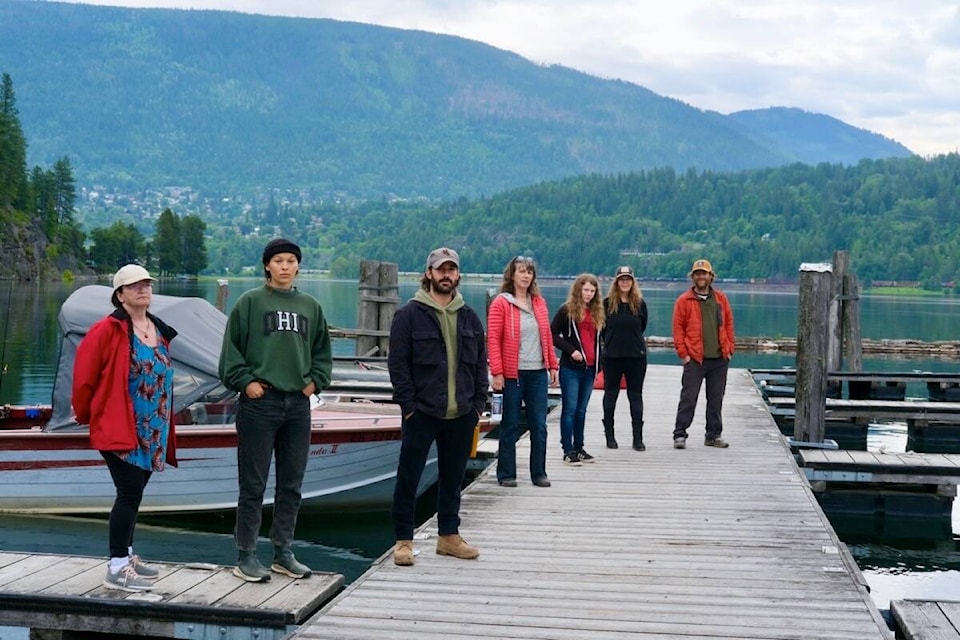In the event of a wildfire or medical emergency, the 20 households at Grohman Creek are on their own.
Road access is limited and in some seasons does not exist at all. Until recently the only year-round access has been by boat, but the City of Nelson has just rescinded docking privileges on the Nelson side that the community has relied on for years.
Motivated by the increasing danger of wildfire in B.C. forests, the Grohman community is looking for improvements in the three related areas of boat access, road access, and public safety.
“The risk of losing everything hangs over us all summer long,” say Grohman resident Jeff Muldoon, “and the road into Grohman Creek is not accessible for emergency services and leaves us incredibly vulnerable to any sort of wildfire event.”
The Grohman Creek community is located on the west side of the West Arm of Kootenay Lake, across the lake from Nelson.
Wildfire danger
In 2020 the Grohman Creek community, concerned about its vulnerability to wildfire, commissioned a consultant to write a fire hazard assessment report for the community and the access road.
The report paints a dire picture of the community’s susceptibility to wildfire. Its recommendations are aimed at both landowners and governments.
The forest on Crown land, especially alongside the Grohman Creek access road, is a fire hazard because of blowdown and accumulated dry fuel that could threaten both firefighting efforts and an evacuation, the report states.
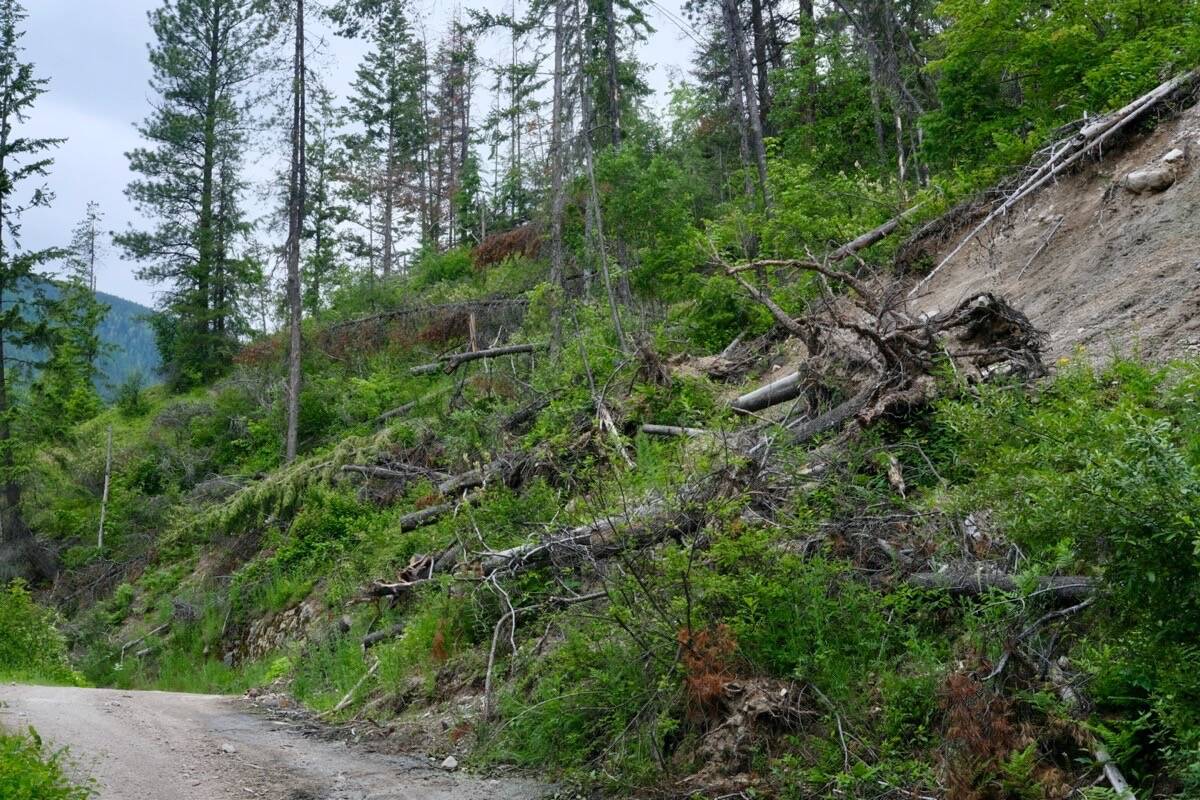
On the 200 hectares of private land at Grohman Creek, the report points to the uneven application of FireSmart principles around houses in the community and to significant blowdown on privately owned forest land.
The authors of the report recommend that the Regional District of Central Kootenay work with provincial ministries and the community to develop a long-term fire safety plan for the road and for the community as a whole.
Road access
For decades there has been a road to Grohman Creek from Johnstone Road near the Pulpit Rock trailhead, but it has always been four-wheel drive only, even in the summer. Some of that road is on private land, and recently, according to Muldoon, it has been cut off from public travel because of a new housing development.
The Grohman Creek community can also theoretically be reached from the other direction, via a forest service road that runs from the west end of the Taghum Bridge and up the west side of the Grohman Creek.
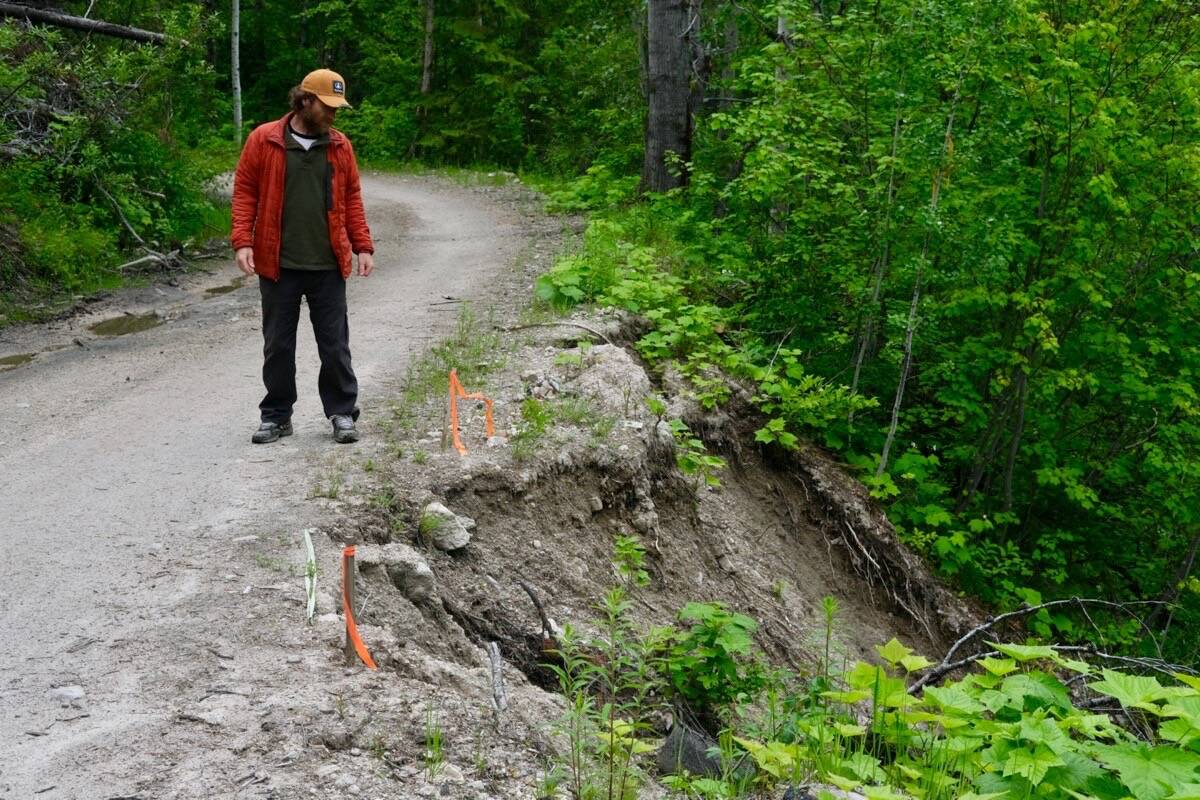
On the way up that road there is a fork, and the right fork crosses a bridge over Grohman Creek onto a road that connects to the Grohman community. But not far down that road from the bridge, a very steep unmaintained hill makes it impassable by most vehicles except in the summer. The road, which traverses a steep hillside, is unmaintained and subject to slides, and is crowded by blown-down forest that becomes more flammable as it dries.
It’s not a road an emergency vehicle would use, Muldoon says.
“Fifteen years ago my neighbour’s house caught on fire. He was on the phone with fire departments – Blewett Fire Department, Taghum Fire Department, Nelson, and nobody’s coming out here. We sat and watched his house burn to the ground.”
One solution, Muldoon says, is better road maintenance and a new bridge across Grohman Creek below the hill, avoiding the hill altogether.
Grohman residents are hoping to have discussions with the provincial Ministry of Transportation and Infrastructure about these issues.
The ministry did not immediately respond to an inquiry from the Nelson Star about any plans to upgrade and maintain the road.
Grohman residents realize they took a chance by moving to a remote location with few services, Muldoon says.
But he adds regional and provincial governments have a responsibility to provide fire and emergency services for which their residents pay regional and provincial taxes.
“We see this as an attempt to update an outdated system and bring basic services such as fire suppression to our community,” he said.
Similar analyses of community safety in the face of wildfire danger, such as in West Arm Provincial Park near Nelson, have highlighted the reality that we are only as safe as our neighbours. A safer forest in the park makes Nelson safer, and vice versa. The same principle applies between Grohman Creek and Nelson, the residents say.
Boat access
For decades, Grohman Creek residents have commuted to Nelson by boat, many of them routinely tying up at the Hall Street pier, often leaving their boats there all day. In May the city posted a sign at the pier giving 10 days notice that the pier would not be available to them any longer.
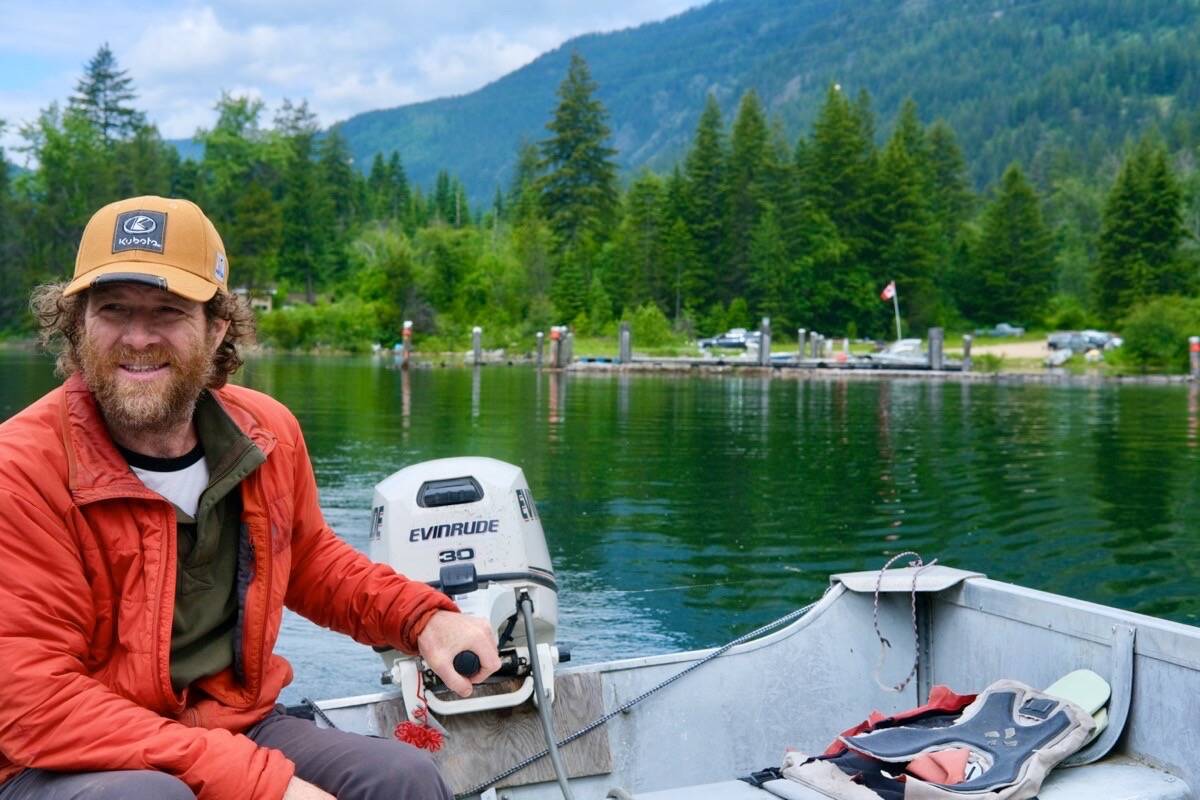
The city’s public works director Colin Innes told the Nelson Star that after the current pier construction is complete, there will be no space for motorized watercraft there.
Now Grohman residents are improvising, tying up their boats at various locations including a small piece of Crown land near the mouth of Cottonwood Creek. A few of the boaters have slips at the Prestige or the Launch Club near the airport, which they continue to use. But about 15 households have no place to legally dock their boats, Muldoon says.
“What we’re looking for is an access point (on the Nelson side) to put a dock that we are going to pay for ourselves,” says Muldoon, who is the president of the Grohman Creek Docking Society, which built the community’s dock on their side of the lake in the 1990s and upgraded it to a 29-slip dock in 2013.
“The community is asking for not one penny from the regional district, not one penny from the city, all we want is a spot that we can apply for a foreshore tenure. We are an independent group that will accomplish this (building a dock) all on our own.”
This request is not new.
Since the 1990s Grohman residents have periodically asked the city and the RDCK to collaborate on creating a dock for them on the Nelson side of the lake.
Muldoon says those discussions never got anywhere.
“We’ve been to community meetings, RDCK meetings, city council meetings, and the typical response has been, ‘We’ll look into it, we’ll do something. And then it just kind of goes by the wayside.”
Mayor John Dooley told the Nelson Star last week that the main barrier to city involvement has been the fact that the Grohman commuters are not city residents. He said if the city is going to build a dock it has to be for everyone, not just a group of people who don’t pay Nelson taxes.
“Our priority is to look after our own people,” Dooley said, “but (if we can) facilitate or help make something happen, we’d be more than happy to be at the table.”
New docking sites
But now there appears to be some progress.
The RDCK recently commissioned a feasibility study to propose possible sites for a dock and to estimate the cost. A summary of the study was presented at the RDCK board meeting on June 16.
The study proposes four possible locations for a dock on the Nelson side and discounts the one that would be most convenient for the Grohman residents, a location at the mouth of Cottonwood Creek near the former transfer station. That land, which is the location of a former garbage dump, is a contaminated site that will eventually need remediation, according to the report summary. It goes on to say that a dock is also not consistent with Nelson’s Official Community Plan, which envisions the area as a park and makes no mention of a boat dock.
The other three proposed locations for lakeshore sites are at Jorgenson Road on the north shore of the lake near the bridge, at Second Street near the RCMP station, and further up the south shore near Sproat Drive.
The report cites drawbacks with all three locations: increased exposure to wind and waves and the need to build a breakwater, more dangerous navigation in bad weather, a much longer commute from Grohman Creek, and uncertainty about whether a dock would be compatible with existing uses in those locations.
The report estimates the cost of capital, operating, borrowing and construction of a dock, breakwater, and parking facility at $1,730,000, which could require a contribution of between $2,000 and $5,000 per household at Grohman Creek.
Muldoon says the docking society wants to analyze the report before commenting.
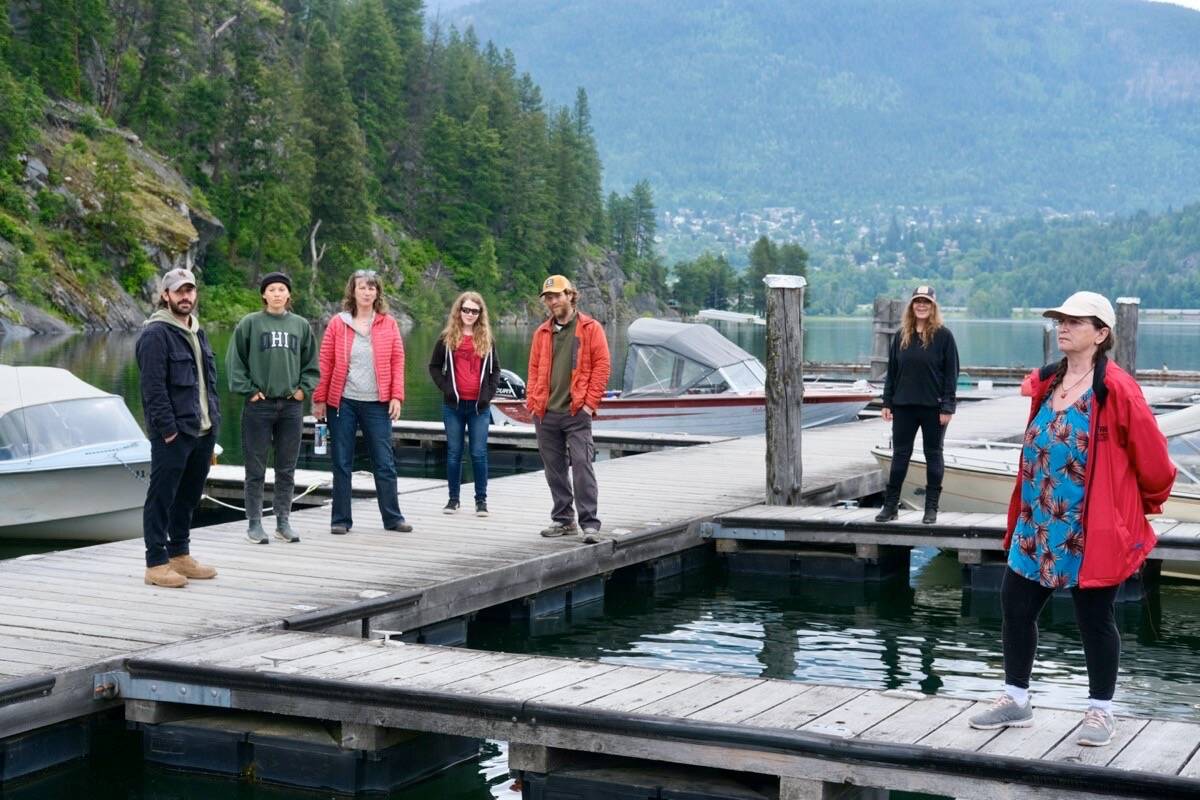
READ MORE:
• New Grohman dock moves ahead
• Grohman Creek residents pitch dock to Nelson council
• BC Parks creates shaded fuel breaks in forests next to Nelson
• Partnership builds road for Nelson wildfire protection
• Nelson at highest risk for wildfire, expert says
• Kalesnikoff to collaborate with RDCK, city, on logging near Nelson
bill.metcalfe@nelsonstar.com
Like us on Facebook and follow us on Twitter
